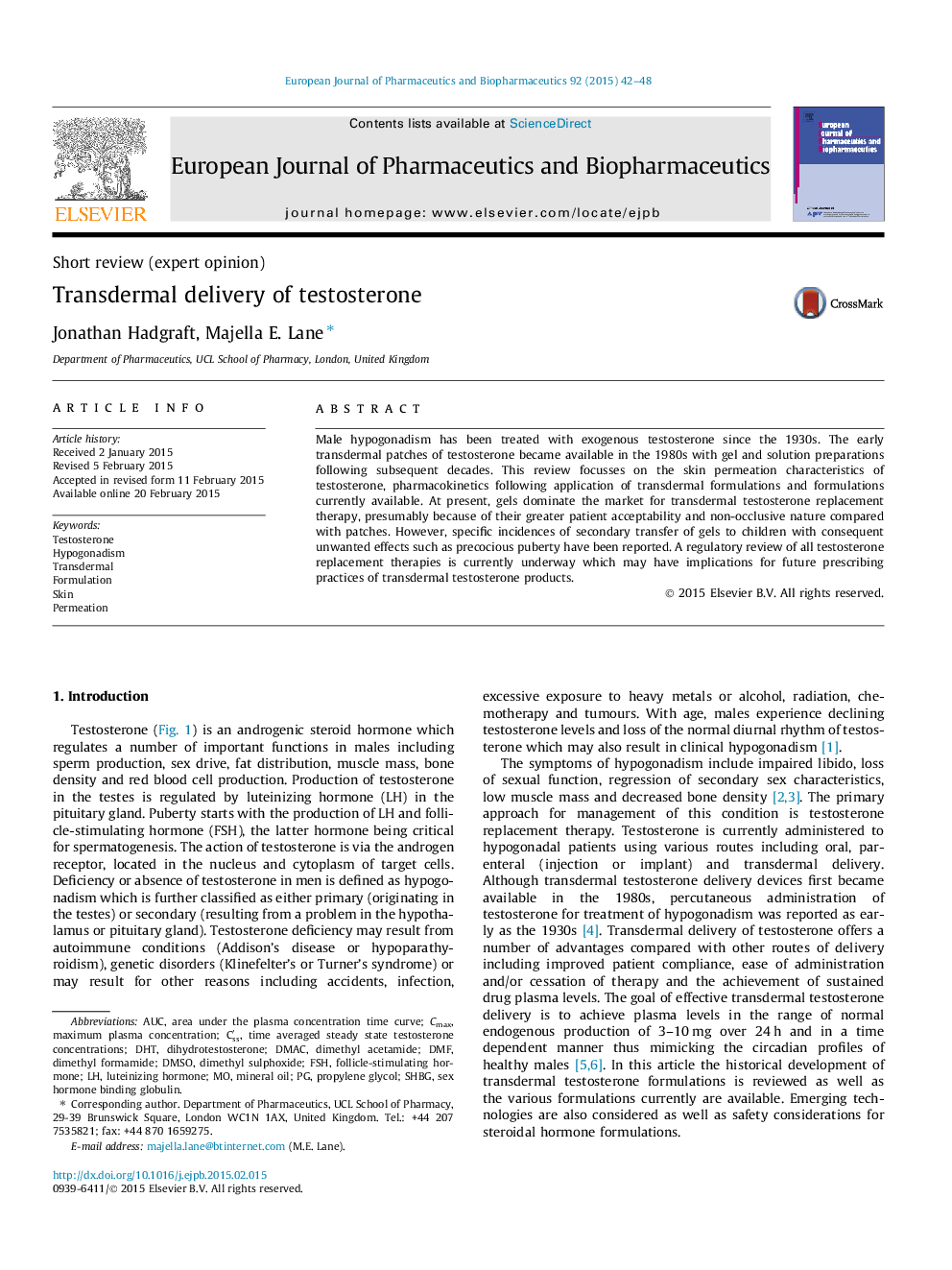| Article ID | Journal | Published Year | Pages | File Type |
|---|---|---|---|---|
| 2083335 | European Journal of Pharmaceutics and Biopharmaceutics | 2015 | 7 Pages |
•Transdermal testosterone delivery has come of age with a variety of technologies currently available to patients.•Pharmacokinetics and metabolism of testosterone following transdermal delivery are detailed.•Advantages and disadvantages of various formulations are discussed.
Male hypogonadism has been treated with exogenous testosterone since the 1930s. The early transdermal patches of testosterone became available in the 1980s with gel and solution preparations following subsequent decades. This review focusses on the skin permeation characteristics of testosterone, pharmacokinetics following application of transdermal formulations and formulations currently available. At present, gels dominate the market for transdermal testosterone replacement therapy, presumably because of their greater patient acceptability and non-occlusive nature compared with patches. However, specific incidences of secondary transfer of gels to children with consequent unwanted effects such as precocious puberty have been reported. A regulatory review of all testosterone replacement therapies is currently underway which may have implications for future prescribing practices of transdermal testosterone products.
Graphical abstractFigure optionsDownload full-size imageDownload high-quality image (171 K)Download as PowerPoint slide
